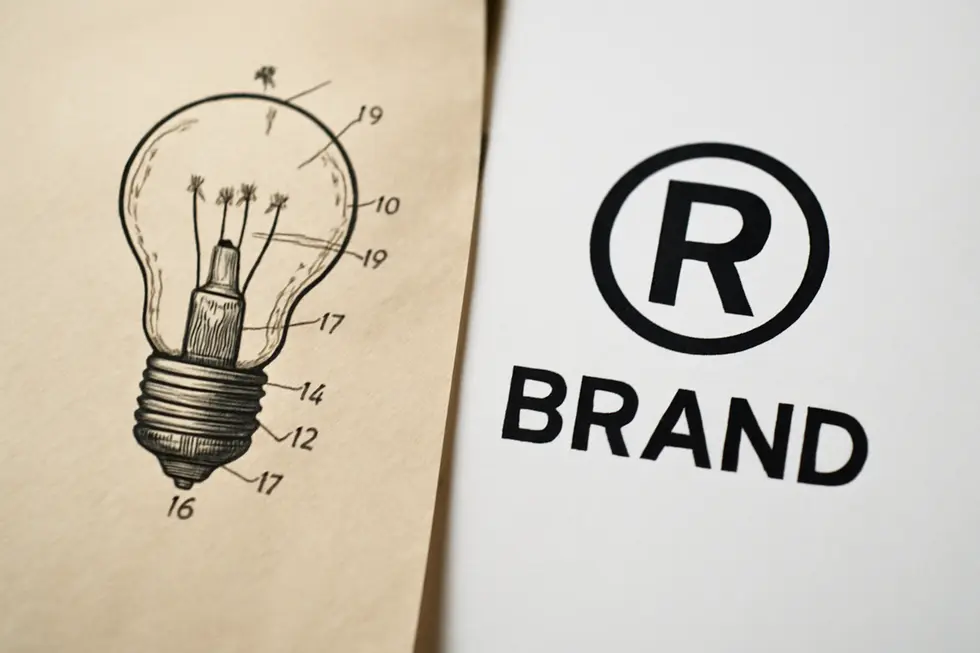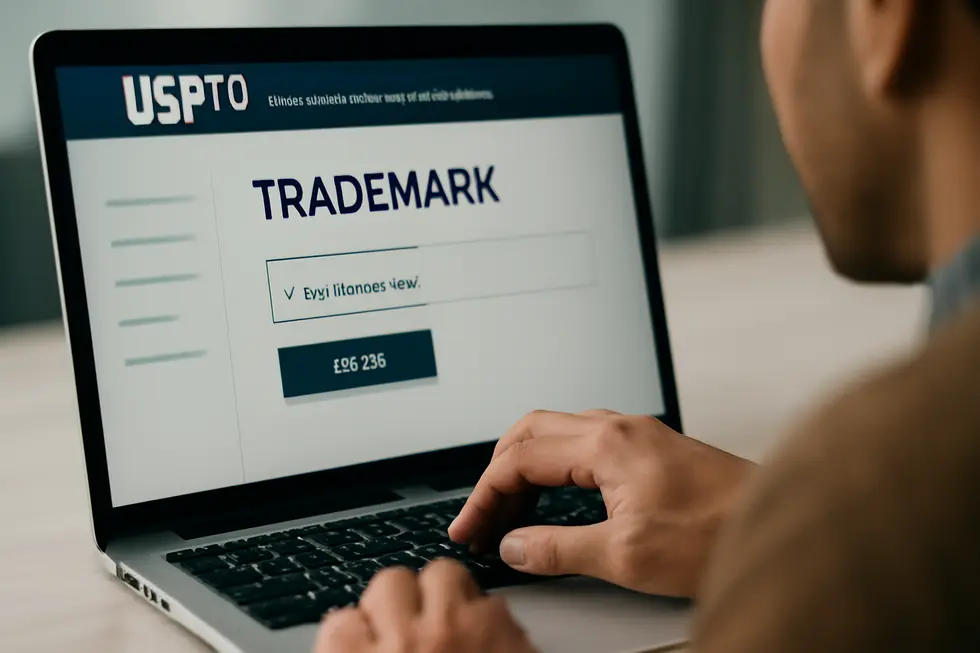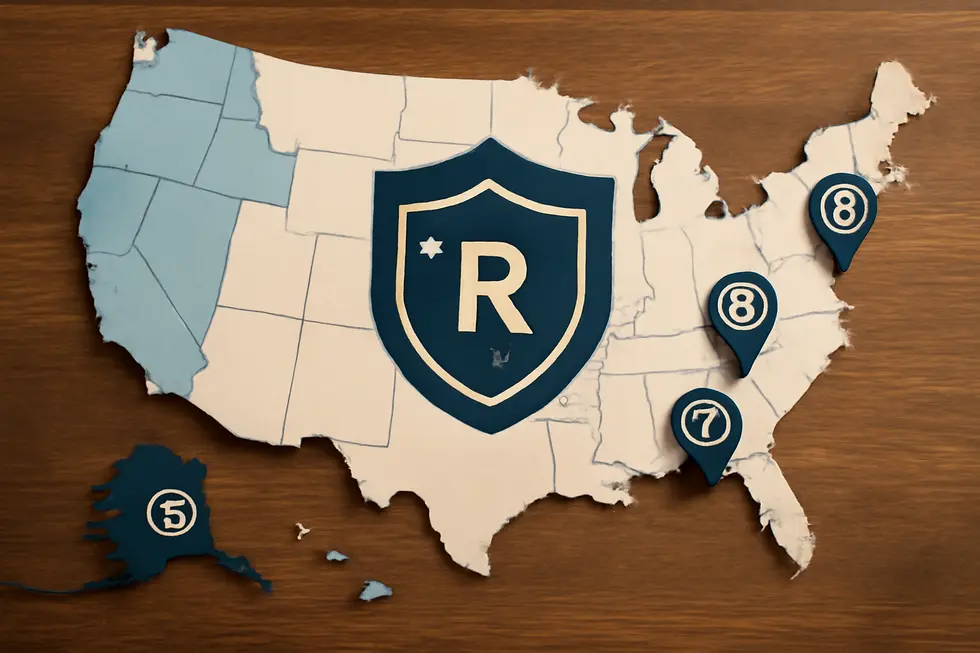Introduction
Protecting your business name is fundamental to securing your brand’s identity and market presence. Many business owners might wonder if it’s possible to patent a name as part of this process, but understanding the distinctions between different intellectual property protections is key. This guide clarifies why names cannot be patented, explores the more fitting trademark protection, and walks you through the critical steps of conducting a trademark search, applying with the USPTO, and deciding between federal and state registration. Each chapter provides essential insights tailored specifically for businesses seeking to legally safeguard their unique names and related brand elements.
Tables of Contents
Chapter 1: Why You Cannot Patent a Name: Understanding Intellectual Property Distinctions
- Navigating the Legal Divide: Why Patents Exclude Names While Trademarks Embrace Them
- Why Patents Exclude Names: How Trademark Law Protects Your Brand Identity
- The Boundaries of Patent Law: Why Names Are Excluded from Patent Protection
- Economic and Societal Impact of Protecting Names Through Trademarks Instead of Patents
- Patent vs. Trademark: Clarifying Protection for Names and Innovations
Chapter 2: How Can You Patent a Name? The Role of Trademark Protection Instead of Patents
- Why Patents Can’t Protect Names: Essential Differences and Trademark as the Right Shield
- Navigating Trademark Registration: Essential Steps to Legally Protect Your Business Name
- The Economic Power of Trademarking Names: Building Brand Equity and Consumer Loyalty
- Why Patents Exclude Names: The Technical and Legal Boundaries of Patent Eligibility
- Navigating Global Trademark Enforcement: Protecting Names Beyond Patents Across Borders
Chapter 3: How Can You Patent a Name? The Process of Conducting a Trademark Search
- Clarifying the Patent Myth: Why Names Are Protected Through Trademarks, Not Patents
- Ensuring Name Uniqueness: Conducting an Effective Trademark Search Before Registration
- From Search to Registration: Navigating Trademark Application Steps to Protect Your Name
- Mastering the USPTO Review: Navigating Trademark Examination and Office Actions When Protecting a Name
- Protecting Your Name Beyond Registration: Navigating Trademark Maintenance and Enforcement
Chapter 4: How Can You Patent a Name? Filing a Trademark Application with USPTO
- Why a Trademark, Not a Patent, Is the Key to Legally Protecting Your Name
- Navigating the Trademark Application Journey: Essential Steps to Protect Your Name with the USPTO
- Mastering Trademark Clearance Searches: Avoiding Conflicts When Protecting Your Name
- Navigating USPTO Examination: Effectively Responding to Trademark Office Actions
- Unlocking Nationwide Brand Rights: The Benefits of Federal Trademark Registration
Chapter 5: How Can You Patent a Name? Understanding Federal vs. State Trademark Registration
- Why Names Fall Outside Patent Protection and How Trademarks Preserve Brand Identity
- Navigating Trademark Protection: Federal vs. State Registration for Securing Your Name
- Mastering the Federal Trademark Registration Process to Protect Your Name
- Navigating Legal Protections and Economic Impact of Federal and State Trademark Registration
- Weighing Federal Versus State Trademark Registration: Tailoring Name Protection to Your Business Reach
Chapter 1: Why You Cannot Patent a Name: Understanding Intellectual Property Distinctions

1. Navigating the Legal Divide: Why Patents Exclude Names While Trademarks Embrace Them
Patents protect inventions that are novel, useful, and non-obvious—such as machines, processes, or compositions. Names, by contrast, do not qualify as inventions because they lack technical innovation or functional advancement. Instead, a name serves purely as a brand identifier, distinguishing products or services from competitors. This unique role places names under the protection of trademark law, which safeguards elements like names, logos, and slogans that signal commercial origin. Unlike patents, which focus on technical breakthroughs, trademarks prevent consumer confusion by securing exclusive rights to distinctive marks in commerce. Understanding this clear legal boundary highlights why names cannot be patented but can be effectively shielded through trademark registration. For more about trademark protection of business identifiers, explore this detailed trademark protection resource. Additional insights are available at Why You Cannot Patent a Product Name | UpCounsel.
2. Why Patents Exclude Names: How Trademark Law Protects Your Brand Identity
Patent law protects tangible inventions—novel, useful, and non-obvious devices or processes—not abstract elements like names. Names serve as brand identifiers rather than inventions, so they fall outside patent eligibility. Instead, trademark law safeguards names, logos, slogans, and other marks that distinguish goods or services in the marketplace. This protection prevents consumer confusion by giving the trademark owner exclusive rights to use the name within their industry. Unlike patents that expire after a limited time, trademarks can offer indefinite protection if properly maintained and continuously used. However, generic or purely descriptive names generally lack trademark eligibility unless they develop distinctiveness. Understanding this clear legal division ensures that while your inventions receive patent protection, your brand’s identity is defended through trademarks suited for source identification. For more detailed guidance on trademark protections, explore trademark protection for business names and logos.
3. The Boundaries of Patent Law: Why Names Are Excluded from Patent Protection
Patent law protects inventions that are new, useful, and non-obvious, focusing on processes, machines, or compositions of matter. Names, however, are simply words or phrases without functional innovation and therefore fall outside patentable subject matter. Since patents exclude abstract ideas and purely descriptive elements, a name cannot qualify as an invention. Instead, names receive protection through trademark law, which safeguards distinctive marks identifying the source of goods or services. Notably, trademarks require distinctiveness; generic or merely descriptive names usually cannot be trademarked, preventing unfair monopolization of common language. This clear separation ensures patent rights protect technical breakthroughs while trademarks guard brand identity without restricting everyday language use. For further insight into trademark protection of business names, see trademark protection for business names and logos. Additional detailed explanations on why product names cannot be patented can be found at UpCounsel.
4. Economic and Societal Impact of Protecting Names Through Trademarks Instead of Patents
Names cannot be patented because patent law safeguards inventions—novel, useful, and non-obvious innovations—rather than abstract symbols like names. Instead, trademarks protect names, logos, and other brand identifiers used in commerce to distinguish goods and services. This distinction is crucial for economic balance and societal clarity. By reserving patents for inventions, the law promotes innovation without granting monopolies over everyday language. Trademarks, on the other hand, protect consumer trust by preventing confusion and preserving brand identity. Allowing names to be patented would unduly restrict language use and impede competition, stifling creativity and market fluidity. Thus, trademark protection for names ensures businesses can build reputations while fostering an open, competitive marketplace. For deeper insights, see UpCounsel’s explanation on why product names cannot be patented but are protected by trademarks and learn more about trademark protection for business names and logos.
5. Patent vs. Trademark: Clarifying Protection for Names and Innovations
Patents and trademarks serve distinctly different roles in intellectual property law. Patents protect inventions—novel, useful, and non-obvious technical solutions such as devices or processes. In contrast, names function as brand identifiers, safeguarded under trademark law. A product or business name does not embody a technical innovation but rather distinguishes the source of goods or services in the marketplace. Thus, names cannot meet patent standards and instead rely on trademarks for legal protection. Trademarks must be distinctive and avoid generic terms to qualify, ensuring consumers can identify and trust the origin of a product. Recognizing these differences helps businesses choose appropriate protection strategies aligned with their value—innovation or brand identity. For further details, explore trademark protection for business names and logos.
Chapter 2: How Can You Patent a Name? The Role of Trademark Protection Instead of Patents

1. Why Patents Can’t Protect Names: Essential Differences and Trademark as the Right Shield
Patents protect inventions—novel, useful, and non-obvious innovations like machines or processes. They grant exclusive rights for about 20 years but do not cover names or brand identifiers. In contrast, trademarks safeguard names, logos, slogans, and other marks that identify goods or services in the marketplace. Trademarks provide indefinite protection as long as the mark is in active use and properly renewed. Unlike patents, trademark registration focuses on preventing consumer confusion by ensuring exclusive commercial identity. Businesses often use patents for product inventions and trademarks for brand names to secure comprehensive protection. Understanding these distinctions clarifies why a name cannot be patented and underscores the importance of applying for a trademark to defend your brand identity effectively. For a deeper exploration of trademark protection for business names, visit trademark2go.com/trademark-protection-business-name-logo. More detailed information on patents and trademarks is also available through the USPTO.
2. Navigating Trademark Registration: Essential Steps to Legally Protect Your Business Name
Because patents do not protect names, trademark registration is the primary legal route to secure exclusive rights to a business or product name. This process begins with verifying that the name is distinctive and not generic or descriptive, ensuring eligibility for trademark protection. Conducting a comprehensive search of existing trademarks prevents conflicts and potential legal challenges. The applicant then files a detailed application to the trademark office, such as the USPTO, including a clear description of the goods or services associated with the name and proof of use or intent to use it in commerce. The registration process may involve responding to examiner inquiries and typically takes several months. Once registered, the trademark owner gains nationwide exclusive rights and can enforce them against infringements, helping establish strong brand identity and consumer trust. For a step-by-step guide on trademark registration, consult resources like How to trademark a business name and explore expert insights at trademark protection for business names, logos, and more.
3. The Economic Power of Trademarking Names: Building Brand Equity and Consumer Loyalty
Trademarking a name offers significant economic advantages by preserving brand value and fostering consumer trust. Unlike patents, which protect inventions temporarily, trademarks secure a name’s distinctiveness indefinitely through continuous use and renewal. This protection signals to customers that your offerings come from a trusted source, reducing confusion and enhancing loyalty. Legally, owning a registered trademark empowers you to enforce exclusive rights, defending your market position against infringers and protecting your reputation. Moreover, trademarks become valuable intangible assets that add to business worth, attract investors, and enable licensing or franchising opportunities. Strong consumer recognition can even extend protection beyond direct competitors, preventing dilution of renowned brands. For more on how trademarks safeguard your business identity, visit trademark protection for business names, logos, and slogans. Detailed guidance is also available at this external resource.
4. Why Patents Exclude Names: The Technical and Legal Boundaries of Patent Eligibility
Patents focus exclusively on protecting inventions and functional innovations, requiring novelty, utility, and non-obviousness. A name, however, is a brand identifier and holds no functional or technological innovation, placing it outside patent eligibility. Instead, names are safeguarded by trademark law, which protects distinctive marks like names, logos, and slogans used to identify goods or services. While patents offer protection for up to 20 years, trademarks can last indefinitely with ongoing use and proper renewal, emphasizing the differing roles each plays in intellectual property. Businesses may therefore hold patents for inventions and trademarks for associated brand names, reflecting these complementary but distinct protections. For further details on trademark protections and registrations, see trademark protection for business names, logos, and slogans. The USPTO website also provides comprehensive guidance on trademarks and patents.
5. Navigating Global Trademark Enforcement: Protecting Names Beyond Patents Across Borders
Trademarks, not patents, protect names by securing exclusive rights to brand identifiers. Unlike patents, trademark registration and enforcement are jurisdiction-specific, requiring businesses to file in each country or region where protection is needed. This fragmented system demands careful strategies, as legal standards and enforcement vary worldwide, increasing risks of infringement or trademark squatting where marks remain unregistered. International treaties like the Madrid Protocol simplify filings but do not establish a unified global trademark, meaning local enforcement remains crucial. Effective protection of names involves understanding these geopolitical complexities and coordinating actions across borders to defend brand reputation and consumer trust. For more insight on trademark protections for names, see trademark protection for business name and logo. External authoritative guidance is available on the USPTO’s official Trademark Basics webpage.
Chapter 3: How Can You Patent a Name? The Process of Conducting a Trademark Search

1. Clarifying the Patent Myth: Why Names Are Protected Through Trademarks, Not Patents
You cannot patent a name because patents are designed to protect inventions, novel processes, or machines—not words or brand identifiers. Instead, names are safeguarded through trademark law, which grants exclusive rights to distinctive names, logos, or slogans used in commerce to identify the source of goods or services. Protecting a name begins with a thorough trademark search to ensure no conflicting registrations exist. This search is a vital step before filing a trademark application with the USPTO or relevant office. Unlike patents, trademarks focus on protecting consumer association with a brand rather than technical innovation. Understanding these fundamental differences helps clarify why the trademark route is essential for name protection. For more on trademark basics and searches, see this detailed trademark protection guide. Additionally, the USPTO website offers extensive information on trademark applications and registrations.
2. Ensuring Name Uniqueness: Conducting an Effective Trademark Search Before Registration
Because names cannot be patented, protecting a business or product name requires registering it as a trademark. The foundational step in this process is conducting a comprehensive trademark search to ensure the name’s uniqueness and avoid conflicts. Start by clearly defining the exact name and any variations you wish to trademark. Then, use search engines and social media to identify any obvious existing uses. Most importantly, search official trademark databases like the USPTO’s system to uncover similar names or marks associated with related goods or services. This thorough investigation helps reduce rejection risks and legal disputes. Once uniqueness is confirmed, you can proceed to prepare and file your trademark application, securing exclusive rights to use the name in your industry. For detailed search insights and assistance, consulting professional legal services or tools is highly recommended. More on trademark protection can be found at trademark protection for business name and logo.
3. From Search to Registration: Navigating Trademark Application Steps to Protect Your Name
To protect a name effectively, you must register it as a trademark since patents do not cover names. Begin by conducting a comprehensive trademark search using databases like the USPTO’s to confirm your desired name isn’t already in use or confusingly similar to existing marks. This search is crucial to avoid rejection and legal conflicts. Next, carefully prepare your application, including a clear depiction of your name, the specific goods or services it represents, and, if applicable, proof of first use in commerce. File this application with the relevant trademark office to initiate examination. If accepted, the mark is published for opposition before official registration grants you exclusive rights. Registered trademarks give strong, enforceable protection for your brand identity across designated markets. For detailed guidance, consult resources such as the trademark protection business name and logo article and official USPTO materials.
4. Mastering the USPTO Review: Navigating Trademark Examination and Office Actions When Protecting a Name
Trademarking a name begins with ensuring it is available by conducting a thorough search using the USPTO’s database. Once the trademark application is submitted, it undergoes a detailed examination by a USPTO attorney who checks for conflicts with existing marks and legal compliance. If concerns arise, the USPTO issues an Office Action outlining objections or required clarifications. Responding promptly and precisely is crucial to address issues such as disclaimers or amendments and prevent abandonment of your application. This examination phase typically spans 8 to 18 months before approval, after which you gain exclusive rights to your name in commerce. Unlike patents, this process focuses on brand identity protection rather than inventions. For more on trademark filing and managing Office Actions, consult trademark name protection details and official USPTO guidelines here.
5. Protecting Your Name Beyond Registration: Navigating Trademark Maintenance and Enforcement
Once your name is successfully registered as a trademark, protection does not end there. Maintaining and enforcing your trademark rights are critical to preserving your exclusive control. You must file periodic maintenance documents, such as a Declaration of Use between the 5th and 6th years, followed by renewals every ten years, to keep the registration active. Vigilant monitoring for unauthorized use is essential, as infringement or dilution can weaken your trademark. Taking prompt action—through cease-and-desist letters or legal proceedings—helps prevent confusion and protects your brand’s value. Neglecting enforcement risks abandonment or genericide, where the mark loses distinctiveness. Understanding these ongoing responsibilities ensures your trademark remains a powerful asset for your business identity. For more insights on trademark protection, visit trademark protection for business names and logos. For detailed steps on maintaining your trademark registration, consult the USPTO’s official guidance.
Chapter 4: How Can You Patent a Name? Filing a Trademark Application with USPTO

1. Why a Trademark, Not a Patent, Is the Key to Legally Protecting Your Name
Patents and trademarks serve distinct legal purposes, and understanding this difference is crucial when protecting a name. Patents safeguard inventions that are novel, useful, and non-obvious, covering tangible products or innovative processes. Names, however, do not qualify as inventions and thus cannot be patented. Instead, trademark law protects names as brand identifiers, including words, logos, and slogans used to distinguish goods or services commercially. To secure exclusive rights over a name in the United States, you must file a trademark application with the USPTO. This process starts with a comprehensive trademark search to avoid conflicts, followed by submitting an application that undergoes attorney review and public opposition periods before registration. Unlike patents, trademarks can be renewed indefinitely, as long as the mark remains in use and is properly maintained. For guidance on filing, the USPTO’s official resources offer detailed instructions and helpful videos. For more on protecting a business name legally, explore this comprehensive trademark protection guide. Official USPTO resources are available here: https://www.uspto.gov/learning-and-resources/uspto-videos
2. Navigating the Trademark Application Journey: Essential Steps to Protect Your Name with the USPTO
Protecting a name through trademark registration with the USPTO involves a clear sequence of steps. First, conduct a thorough search in the USPTO’s Trademark Electronic Search System (TESS) to verify no existing similar marks clash with your desired name. Next, prepare a detailed application, providing your legal details and exact depiction of the trademark, whether text or logo. Defining the associated goods or services precisely is critical for accurate classification. Filing occurs online via the Trademark Electronic Application System (TEAS), where you declare current use or intent to use the mark commercially, paying the required filing fees. The USPTO reviews your submission, potentially issuing office actions requesting clarifications. After provisional approval, your trademark enters a public opposition period allowing challenges before final registration. This process, taking 6–12 months, secures exclusive rights to your name in commerce. For more on protecting your brand identifiers, see trademark protection for business names and logos. Official applications and guidelines appear at USPTO.gov/trademarks.
3. Mastering Trademark Clearance Searches: Avoiding Conflicts When Protecting Your Name
Protecting a name through trademark requires careful preparation, starting with a thorough trademark clearance search. This process involves investigating existing trademarks and common law uses to detect any potentially conflicting marks. Conducting this search before filing your application with the USPTO minimizes the chance of rejection and costly legal battles. The search should cover both registered trademarks and unregistered marks that may still have legal rights. After confirming your name’s uniqueness, you file your trademark application, specifying the goods or services it represents. The USPTO then examines your application, and you must address any issues raised, such as office actions or oppositions. Hiring a trademark attorney can streamline navigating this complex process and reinforce your rights. For more detailed guidance, visit the USPTO Trademark trademark search resources. For comprehensive insights on protecting your brand name and logo, explore this resource on trademark protection business name logo.
4. Navigating USPTO Examination: Effectively Responding to Trademark Office Actions
When you apply to trademark a name with the USPTO, the process involves more than just filing. After your submission, a trademark examiner reviews it for conflicts and compliance. If issues arise, the USPTO issues an Office Action outlining refusals or requests for clarification. It is crucial to respond within the given timeframe, addressing each concern with legal arguments or necessary amendments. Ignoring an Office Action leads to abandonment of your application. If challenges persist, proceedings may move to the Trademark Trial and Appeal Board (TTAB), where professional legal support is often essential. Successfully navigating these examination steps ensures your protection under trademark law rather than patent law. For deeper insights on this process, consult trademark protection for business names and official USPTO resources.
5. Unlocking Nationwide Brand Rights: The Benefits of Federal Trademark Registration
While you cannot patent a name, federal trademark registration with the USPTO offers powerful legal protection. The process begins by ensuring your chosen name is unique through the USPTO’s Trademark Electronic Search System (TESS). After verifying availability, you file a detailed application online, specifying your mark and related goods or services. Successful registration grants nationwide rights, creating a presumption of ownership and validity that simplifies legal enforcement. This allows you to use the ® symbol, deterring infringement and providing access to federal courts for disputes. Registration also establishes a public record, discouraging others from adopting confusingly similar marks. Many applicants benefit from expert guidance to navigate USPTO requirements smoothly. For more detailed instructions and federal registration benefits, visit Top Shelf Trademarks and explore comprehensive trademark protection measures at Trademark Protection Business Name & Logo.
Chapter 5: How Can You Patent a Name? Understanding Federal vs. State Trademark Registration

1. Why Names Fall Outside Patent Protection and How Trademarks Preserve Brand Identity
Names cannot be patented because patents apply exclusively to inventions such as machines, processes, or compositions of matter. Since names lack inventive or functional qualities, they do not satisfy patent requirements. Instead, protection of a business or product name is secured through trademarks, which guard brand identifiers like names, logos, and slogans used in commerce. Trademarks offer indefinite protection, provided they remain in use and are properly renewed, granting the owner exclusive rights to prevent confusingly similar marks in the marketplace. Trademark applications require careful vetting to ensure distinctiveness and avoid conflicts with existing marks. Unlike patents, trademarks specifically protect brand identity and consumer recognition, playing a critical role in establishing and defending business reputation. For more on securing trademark protection for names, see this resource on trademark protection for business names. For detailed explanations contrasting patents and trademarks, UpCounsel offers valuable guidance.
2. Navigating Trademark Protection: Federal vs. State Registration for Securing Your Name
Although you cannot patent a name, trademark registration offers crucial legal protection for business or product names. Federal trademark registration through the USPTO provides nationwide rights, enabling you to enforce your claim across all states, use the ® symbol, and protect against counterfeit imports. This process involves an application, examination, and potential opposition and usually costs between $250 and $350 per class. State trademark registration, by contrast, grants protection limited to that state’s borders, offering faster, less expensive coverage suited for local businesses. Both registrations require name distinctiveness and active commerce use but differ in scope of enforcement and longevity. Additionally, unregistered common law rights arise from name use but are geographically limited and harder to enforce. Choosing between federal, state, or relying on common law depends on your business scope and protection needs. For more on legal protections for brand names, explore trademark protection for business name and logo. For official filing procedures, see the USPTO resources.
3. Mastering the Federal Trademark Registration Process to Protect Your Name
Since names cannot be patented, protecting them federally requires registering a trademark with the USPTO. Begin by conducting a thorough trademark search to confirm your name’s uniqueness and avoid conflicts. Next, identify the proper trademark class for your goods or services, which ensures the application reflects the correct commercial use. Prepare your application carefully, including a specimen showing the name in commerce if applicable, and decide whether to file based on current use or intent to use. Filing is done online via the USPTO’s TEAS system, choosing between TEAS Plus for lower fees or the more flexible TEAS Standard. After submission, a USPTO examining attorney reviews the application, and you must promptly respond to any office actions to prevent delays. Once approved, the name is published for a 30-day opposition period before final registration. Maintaining your trademark requires periodic renewal filings to ensure continued protection. This structured federal process offers nationwide exclusive rights, contrasting with state-level registrations that provide limited geographic protection. For guidance on each step, consult the USPTO’s resources and expert trademark services, such as those detailed at trademark protection for business names and logos. More information is available on the USPTO’s official trademark registration page.
4. Navigating Legal Protections and Economic Impact of Federal and State Trademark Registration
Though you cannot patent a name, trademark law offers critical legal protections for names used in commerce. State trademark registration provides localized rights within that state’s borders, making it cost-effective and quick for businesses with a limited market area. However, its geographic scope restricts enforcement and leaves your brand vulnerable outside that state. Federal registration through the USPTO grants nationwide rights, stronger legal presumption of ownership, and access to federal courts, enabling more robust enforcement against infringement. It also adds economic value by enhancing brand credibility and deterring counterfeiters, albeit at higher costs and longer processing times. Choosing between state and federal registration depends on business size, market reach, and budget, influencing the overall strategy for protecting your brand identity and ensuring exclusive use of your name. For detailed insights, visit trademark protection for business name and logo. See also the USPTO for federal trademark procedures and benefits.
5. Weighing Federal Versus State Trademark Registration: Tailoring Name Protection to Your Business Reach
When securing rights to a business or product name, choosing between federal and state trademark registration requires careful consideration of your operational scope and protection needs. Federal registration through the USPTO grants nationwide protection and stronger legal enforcement, making it ideal for companies with plans to expand regionally or nationally. It allows exclusive use of the name across the United States and supports lawsuits in federal courts. Conversely, state registration offers more limited protection confined to that state’s borders, often with faster processing and lower costs. This suits businesses operating locally without immediate growth ambitions beyond their state. Balancing budget constraints, growth plans, and enforcement strength guides the decision: start local with state registration if suitable, then upgrade to federal as your brand scales. Conducting thorough trademark searches at both levels before filing is essential. This strategic choice ensures the name is safeguarded appropriately according to current and future business goals. For more detailed insights, consult resources on trademark protection for business names and logos and the Network Solutions guide to brand name protection.
Final thoughts
While it might seem intuitive to seek a patent for your business name, the legal reality is that patents protect inventions, not names or brand identifiers. Protecting a name requires understanding and leveraging trademark law, which grants exclusive rights to use distinct names, logos, and slogans in commerce. By knowing why names cannot be patented, embracing trademark protection, thoroughly searching existing marks, carefully applying through the USPTO, and selecting the correct level of protection—federal or state—you position your business to safeguard its identity effectively. Securing a trademark is a foundational investment in your brand’s future, offering legal exclusivity and the power to prevent confusion in the marketplace. Your business name is a vital asset, and protecting it through accurate trademark procedures ensures it remains a unique and valuable part of your success.
Your IP is the foundation of your success – let’s protect it together before it’s too late. We can’t wait to help you turn your ideas into legally secured assets.
About us
undefined


